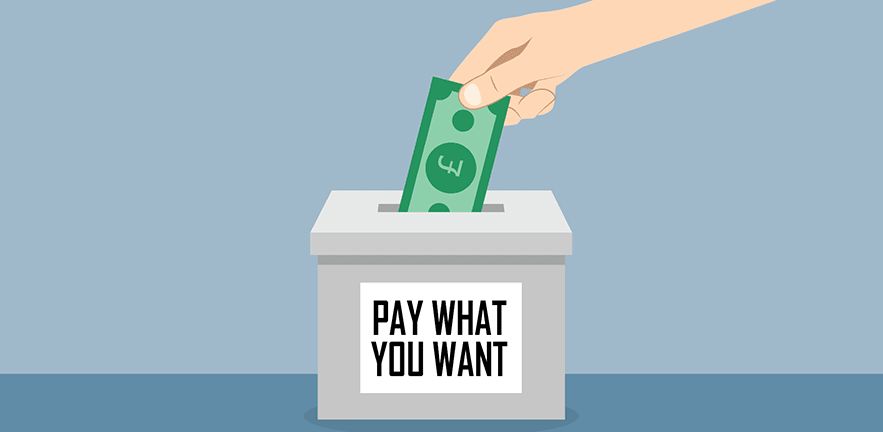People pay more under pay-what-you-want systems when they pay afterwards if the product or service is highly valued, says study co-authored at Cambridge Judge Business School.

Pay-what-you-want models have been tried – with mixed success – for everything from record albums (In Rainbows by British band Radiohead) to meals by US restaurant chain Panera Bread.
So how should non-profit institutions including museums or local community theatres approach such an initiative: by asking people to pay or make a donation (“contribute-what-you-want”) before seeing a live performance or art exhibition, or after viewing such a show or installation?
A new study in the Journal of Marketing co-authored by Professor Vincent Mak of Cambridge Judge Business School suggests that the answer lies in how highly an individual or local community values the theatre or other offering – and that much-cherished playhouses, for example, may do better by seeking a payment after the final curtain.
Implications for theatres, museums and online information sources
“The study identifies a link between value of the offering and the obligation thus felt by the recipient, and this affects the amount of the payment,” says study co-author Vincent Mak, Professor of Marketing & Decision Sciences at Cambridge Judge Business School. “The implications extend to many situations including museums such as the British Museum that are nominally free but reliant on donations, and also to online information sources such as Wikipedia and The Guardian which do not charge in advance but seek donations or other forms of voluntary payment.”
The study found that the amount of money people provide under a pay-what-you-want system differs depending on the timing of their payment decisions – before or after receiving the good or service involved. People pay more after receiving the offering than beforehand when the product value is high, because there is higher “salience” to the social-exchange aspect of the transaction and the recipient therefore feels more obligation toward the seller. But when the product value is low, the opposite happens: higher salience of the social-exchange aspect of the transaction after receiving the offering only makes more prominent the fact that the exchange is not substantive, leading to lessened obligation and lower payment, the researchers found.
How pay-what-you-want consumers engage socially
“Many aspects of daily life revolve around people receiving and voluntarily returning favours,” the study says. “These activities, which can be broadly subsumed under the rubric of social exchange, represent a major domain of social interactions among individuals and organisations. A consumer in a pay-what-you-want transaction can be seen as the recipient in a social exchange, since the consumer is prompted to consider a voluntary payment in return for the unconditional offer of a product or service by the seller.
“A range of thoughts could go through the consumer’s mind as they elaborate on the transaction in order to determine how much to pay. These thoughts can be directly related to the social factors associated with pay-what-you-want as a social exchange.”
Amazon gift cards and a Nepalese restaurant
The study is based on experiments at a UK university where participants could pay any amount for an Amazon gift card with a specific value, as well as a field experiment at a restaurant in Nepal, which were backed up by online studies including one in a charitable-donations context – in which participants decided how much to pay for a raffle ticket to assist “valiant efforts” of the American Red Cross to help people affected by emergencies.
“Our findings are relevant to businesses that offer products with a pricing model that has a strong pay-what-you-want or, more generally, a voluntary payment element; as well as to non-profits, social enterprises, and charities where donations in exchange for a good or service are common,” the study concludes. “While pay-what-you-want for these businesses could be successful, they are also prone to failure. It is thus important to highlight measures that could raise pay-what-you-want payments, including the timing of solicitation of these payments.”
The study
The study – entitled “Before or After? The Effects of Payment Decision Timing in Pay-What-You-Want Contexts” – is co-authored by Raghabendra P. KC, Assistant Professor of Marketing in the Department of Business at Rollins College in Florida, who is a PhD graduate and Associate of Cambridge Judge Business School; Vincent Mak, Professor of Marketing & Decision Sciences and Vice-Dean for Programmes & Research at Cambridge Judge Business School; and Elie Ofek, Professor of Marketing at Harvard Business School.


